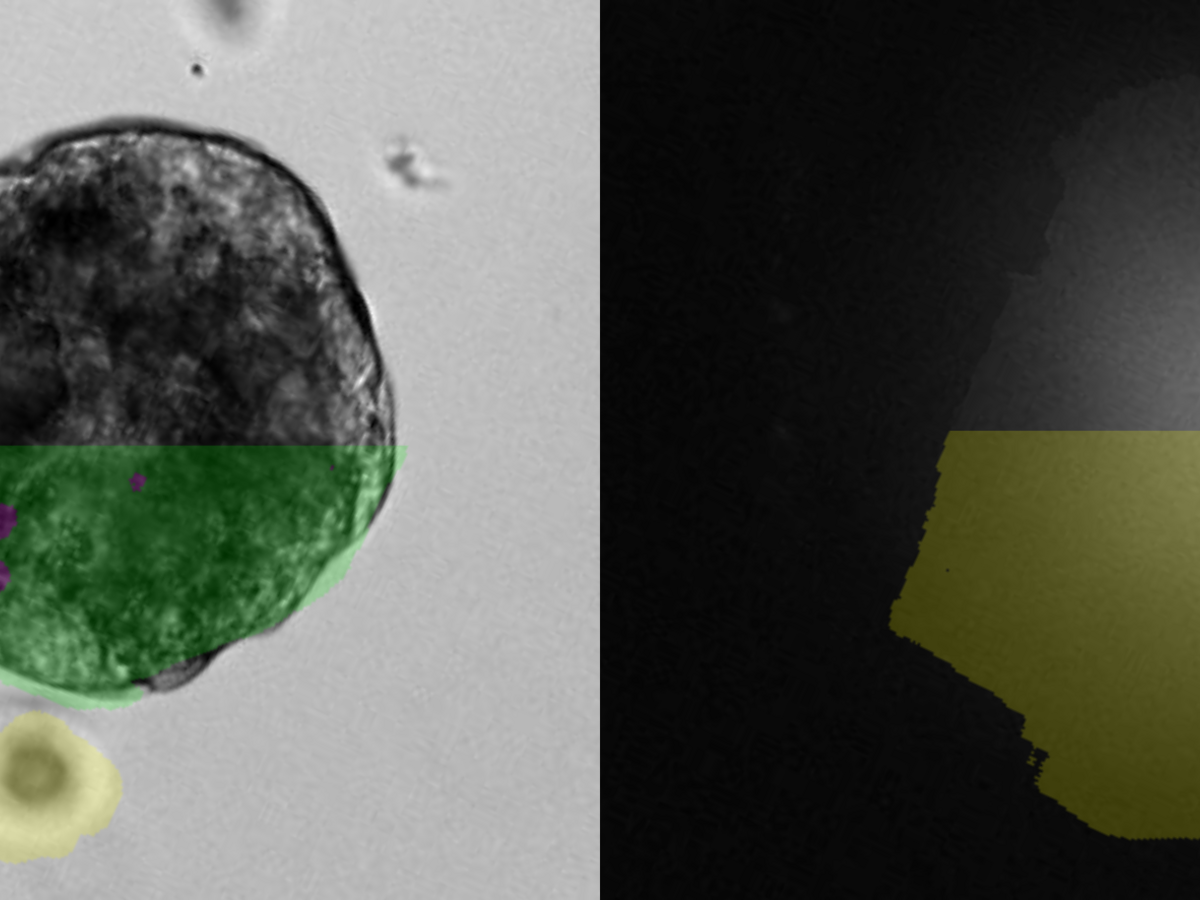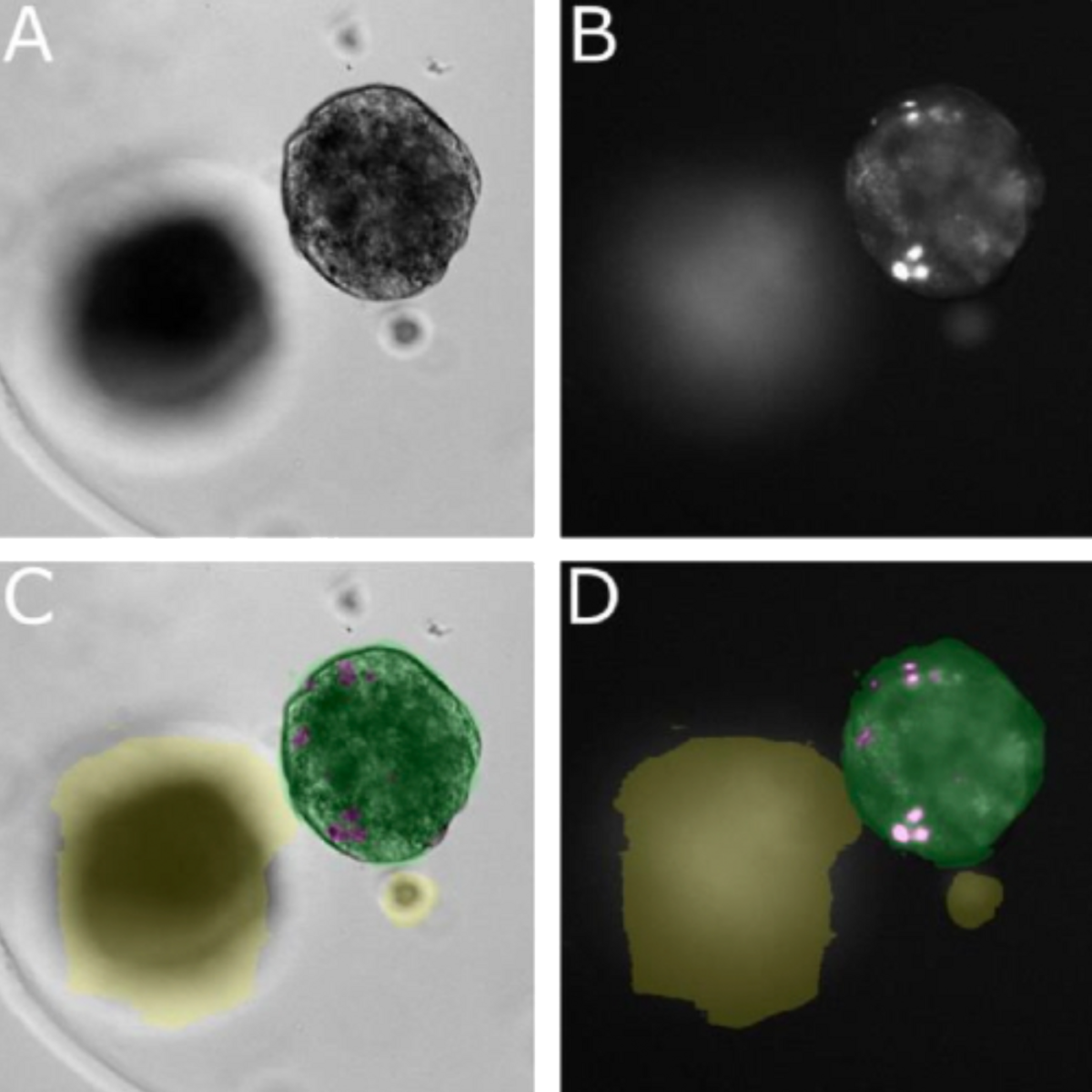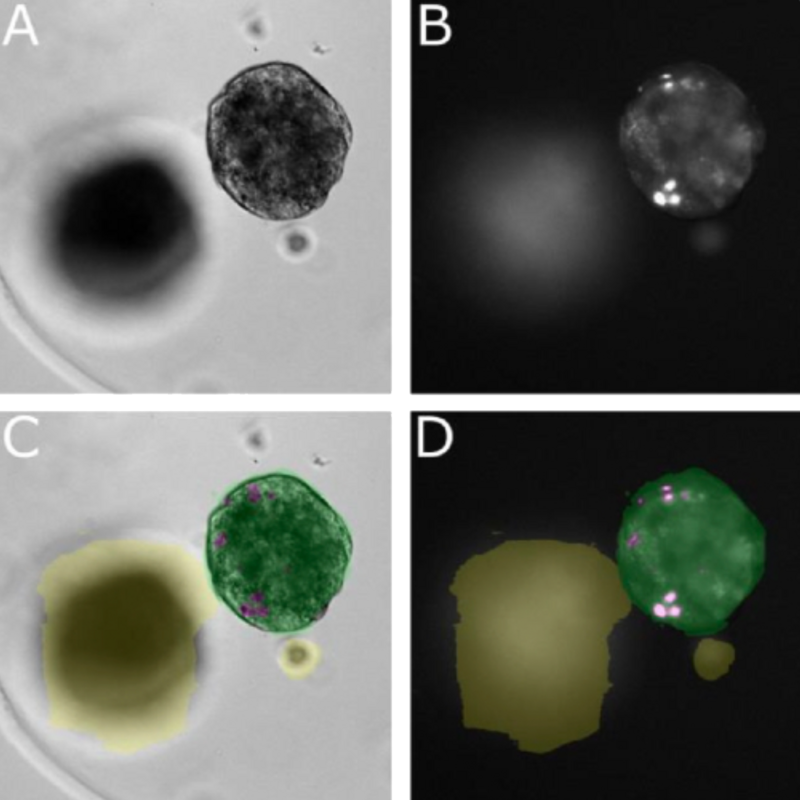Application
note
Cell therapy has the potential to revolutionize the treatment of severe diseases for billions of people. Likarda's encapsulated pancreatic organoids are one example of this cutting-edge technology. To guarantee patient safety, novel types of release assays are required for these new types of medicines. So far, the only option was to use human experts laboriously assessing individual microscopic images. With the VAIDR system from TRI, this task can now be completed by AI In seconds.
Likarda develops ground-breaking cell therapies
For billions of people, Diabetes is a threat to their health at some point in life. Current treatment options require regular medication or expensive and risky implantations. Likarda has developed an alternative: Stem-cell derived pancreatic organoids encapsulated within immuno- protective hydrogel microspheres.
Guaranteeing quality used to be extremely laborious
Release assays are required for every batch of manufactured drug product to guarantee patient safety and treatment efficacy. Traditional pharmaceuticals can be analyzed by routine, highly automated chemical tests, but in complex systems such as Likarda’s encapsulated pancreatic organoids, quality assessment often requires a human expert to manually analyze hundreds of microscopic images to quantify organoid viability and identity. While acceptable during early development, this procedure does not scale to the quantities of production required to support a clinical study, let alone to treat a meaningful number of patients.
A challenging task for automated image analysis
The reason that a human expert was required to do this monotonous work is the complexity of the image analysis task: Due to the 3-dimensional nature of the encapsulated organoids, images frequently contain out of focus organoids that cannot be accurately analyzed. Additionally, the fluorescent stain that labels dead cells is not perfect, requiring human expertise in many cases to distinguish imaging artifact from truly dead cells.
VAIDR’s user-trainable AI is the ideal tool for the job
At this point, Likarda introduced the VAIDR image analysis platform into the process. The unique property of this AI-based analysis software is its ability to be trained by a human who needs to be an expert only in the biological side of the issue -- not in data/computer science. Using a graphical user interface, the structures of interest are simply highlighted, and the software learns to detect and quantify them.

"Our established process was based on visual inspection by a human expert. This was simply not sustainable for the scale we needed the process to run at. So, using VAIDR’s automated, AI-based workflow was the only option in this case."
Stephen Harrington
Director of Hydrogel and Cell Formulation at Likarda
Example of encapsulated pancreatic organoid analysis
(A) The brightfield channel shows one in-focus organoid, one out-of-focus organoid, several out-of-focus debris structures, and the edge of the hydrogel capsule in the lower left corner.
(B) The same location in the fluorescence channel shows the bright spots, representing dead cells, in the in-focus organoid, which need to be detected. Additionally, weaker fluorescent structures which should be ignored, are visible.
(C) VAIDR analysis results overlaid on the brightfield channel show that the algorithm successfully identified and rejected the out-of-focus structures (yellow). The relevant organoid was detected (green).
(D) On the fluorescence channel with overlay, only the relevant, strongly fluorescent structures are detected (magenta). These are quantified and compared to the total (green) organoid area.

"When moving from development into the clinical stages,introducing scalability at every level is crucial. VAIDR helps us take our projects to the next level."
Lisa Stehno-Bittel
CSO at Likarda
VAIDR detects and quantifies like a human expert – only much faster
To solve the problem at hand, Stephen Harrington, and his team at Likarda highlighted the in-focus organoids, unfocused ones as well as the dead cells on a few images. After the first training round, VAIDR’s optimization workflow allowed them to correct the mistakes that the AI still made on fresh images. After a few iterations, the detection performance was equivalent to what the experts would have achieved, and the training was concluded. From this point onwards, the bulk of the work in this release assay is done by VAIDR, with human experts only supervising the continued performance.
Objective quantification increases value
For their upcoming cell therapy projects, Likarda plans to create the required analytical methods with VAIDR in parallel to the product development process itself. The expectation is that this will lead to the acceleration of the entire project, by saving valuable time for the scientists. Additionally, building a larger base of objective quantification results during the early project phases increases confidence in the asset under development. The benefits are two-fold: Patient safety and efficacy checks are built into the product, as demanded by the quality-by-design principles. At the same time, the project is de-risked commercially, which facilitates transition into the next development phase.

"Being part of Likarda’s success story is a great honor for us. We are excited to support their upcoming projects by making their product testing scalable from the get-go."
Bruno Chilian
CSO at TRI




